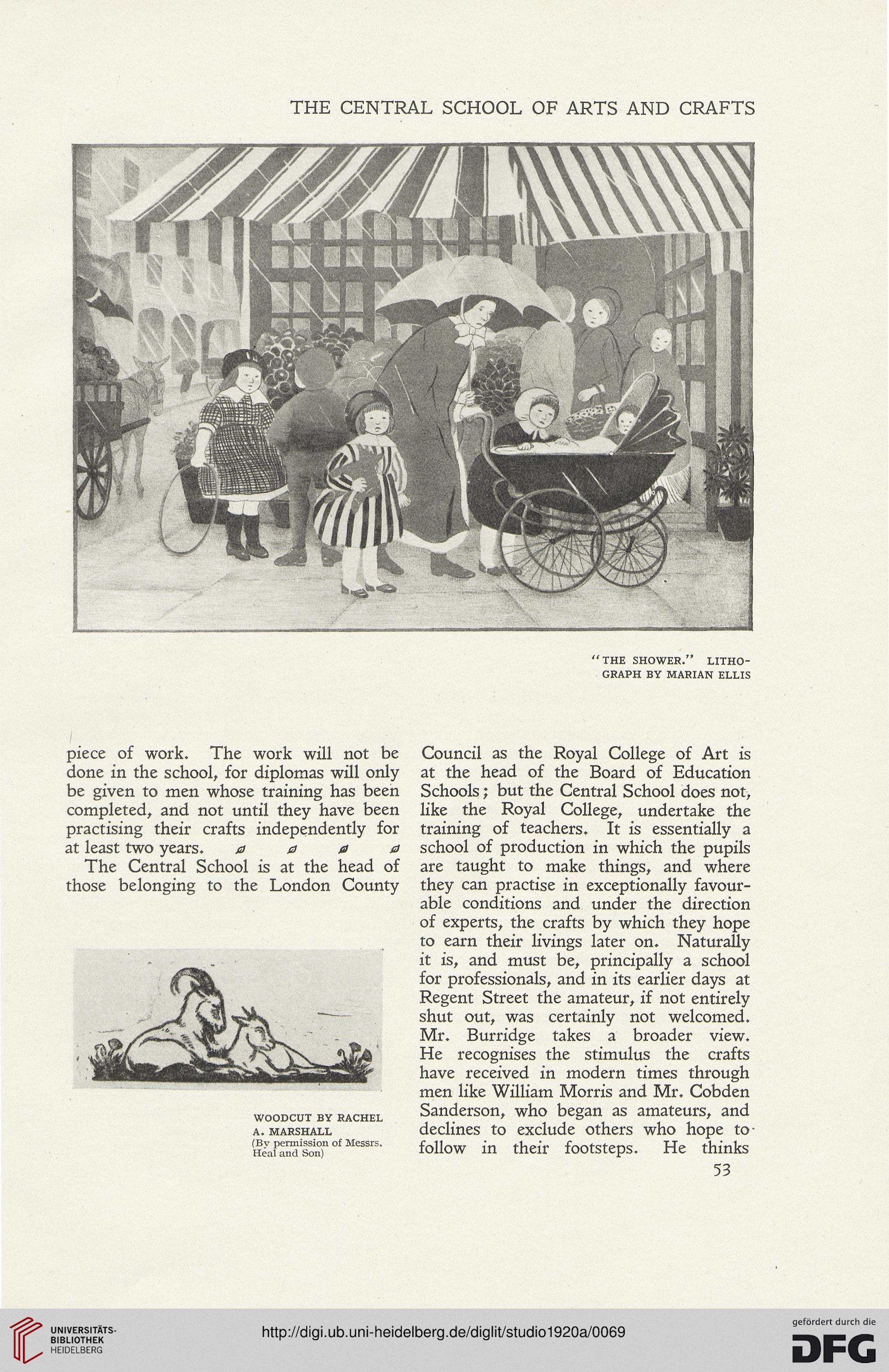THE CENTRAL SCHOOL OF ARTS AND CRAFTS
piece of work. The work will not be
done in the school, for diplomas will only
be given to men whose training has been
completed, and not until they have been
practising their crafts independently for
at least two years. a 0 a a
The Central School is at the head of
those belonging to the London County
WOODCUT BY RACHEL
A. MARSHALL
{By permission of Messrs.
Heal and Son)
Council as the Royal College of Art is
at the head of the Board of Education
Schools; but the Central School does not,
like the Royal College, undertake the
training of teachers. It is essentially a
school of production in which the pupils
are taught to make things, and where
they can practise in exceptionally favour-
able conditions and under the direction
of experts, the crafts by which they hope
to earn their livings later on. Naturally
it is, and must be, principally a school
for professionals, and in its earlier days at
Regent Street the amateur, if not entirely
shut out, was certainly not welcomed.
Mr. Burridge takes a broader view.
He recognises the stimulus the crafts
have received in modern times through
men like William Morris and Mr. Cobden
Sanderson, who began as amateurs, and
declines to exclude others who hope to-
follow in their footsteps. He thinks
53
piece of work. The work will not be
done in the school, for diplomas will only
be given to men whose training has been
completed, and not until they have been
practising their crafts independently for
at least two years. a 0 a a
The Central School is at the head of
those belonging to the London County
WOODCUT BY RACHEL
A. MARSHALL
{By permission of Messrs.
Heal and Son)
Council as the Royal College of Art is
at the head of the Board of Education
Schools; but the Central School does not,
like the Royal College, undertake the
training of teachers. It is essentially a
school of production in which the pupils
are taught to make things, and where
they can practise in exceptionally favour-
able conditions and under the direction
of experts, the crafts by which they hope
to earn their livings later on. Naturally
it is, and must be, principally a school
for professionals, and in its earlier days at
Regent Street the amateur, if not entirely
shut out, was certainly not welcomed.
Mr. Burridge takes a broader view.
He recognises the stimulus the crafts
have received in modern times through
men like William Morris and Mr. Cobden
Sanderson, who began as amateurs, and
declines to exclude others who hope to-
follow in their footsteps. He thinks
53




